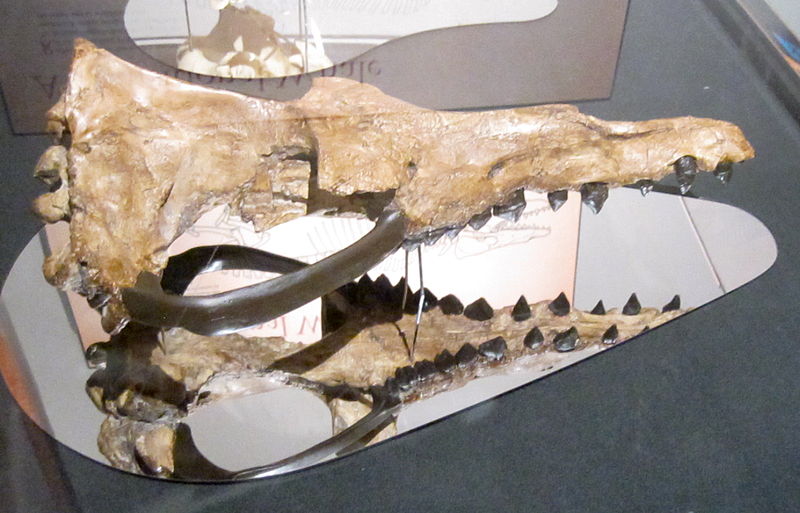Interactions
To start, because Maiacetus inuus is so old and was founded as a fossil, there is not much direct information on its interactions with other species. Although, based upon its skeletal structure we can make some judgments that may give insight to its interactions with other species.
The skeleton of Maiacetus inuus showed that it had large canine teeth and shearing molars used to slice and chew their prey (Gingerich et al. 2009; Uhen 2010). It also was fairly large in size. This is evidence that Maiacetus inuus was much higher on the food chain than many aquatic organisms. Due to the carnivorous teeth, Maiacetus inuus fed on other organisms smaller than themselves. Maiacetus inuus was a creature of both land and sea which lets us know that it had predators on both land and sea. Again, because the newborns were birthed on land, the young especially had predators on land and in the sea (Gingerich et al. 2009). Also, because Maiacetus inuus only birthed normally one calf at a time the survival rate for their species was lower than most because they had land and aquatic predators.
One organism that was around during the time of Maiacetus inuus and may have had interactions with it is Rodhocetus (Rodho meaning the geological anticline and cetus meaning whale). Rodhocetus was also part of the Protocetidae family. The oldest fossil of Rodhocetus was found from deep shelf deposits (Gingerich et al. 1994) which lets us know that it was more of an aquatic animal compared to Maiacetus inuus. Adding to that, Rodhocetus had shorter limbs than Maiacetus inuus because it didn't need them for land and lived more in the depths of the ocean rather than near the shore like Maiacetus inuus. Rodhocetus and Maiacetus inuus may have had interactions in the sea and Maiacetus inuus ventured farther out to sea and Rodhocetus ventured closer to the shore. They also had similar teeth structures so they competed for food as well.
To learn more about our organism check out our Facts page.
